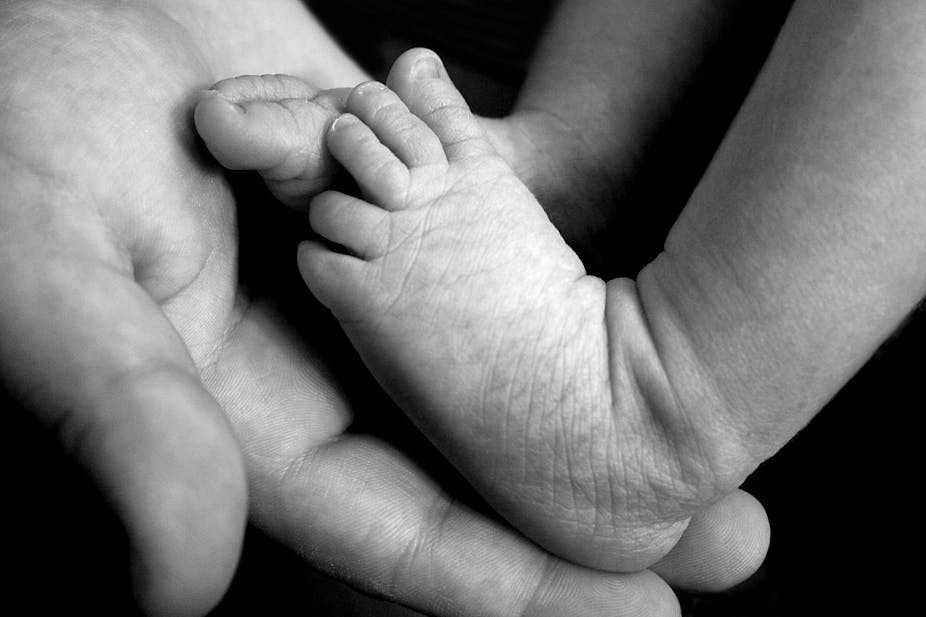Infertility plagues one in six Australian couples, and in approximately half of these cases the problem lies in poor semen quality.
The discovery that a man has poor semen quality can be emotionally challenging and lead to feelings of inadequacy, but should it?
If we look at things from an evolutionary point of view, poor semen quality in the human male is not unexpected.
To breed or not to breed …
All organisms are faced with a fundamental decision whether to invest limited resources into growth and survival or into reproduction.
The production of semen requires resources to produce its components: sperm and the seminal fluid compounds that power motility (a sperm’s ability to swim properly toward an ovum) and affect their ability to fertilise an ovum.
Resources used for semen production are unavailable for use elsewhere in the body. Moreover, once produced, sperm can be recognised by the immune system as a foreign body because sperm possess surface antigens that are not recognised by the male producing them.
As a result, a man’s sperm can be attacked by his own immune system.
Of course, this defence mechanism can be suppressed by way of immunosuppressant drugs, such as corticosteroids, resulting in a marked improvement in semen quality.
But suppressing the immune system in this way can be costly in terms of increased susceptibility to infection.
Evolution and sperm quality
Recent investigations have revealed the selective pressures that promote semen quality. When females mate with two or more males in quick succession, the sperm from those males must compete to fertilise one or a few eggs.
The male with the greatest semen quality will father more offspring, leading to “selection” for improved semen quality across generations.
This phenomenon is exemplified by two recent studies of laboratory evolution:
1) In a study published in the journal Evolution, enforced monogamy in naturally polygamous beetles was shown to result in an evolutionary decline in testes size and competitive fertility.
2) A study published in the journal BMC Evolutionary Biology showed that polygamy in female house mice resulted in an increase in semen quality in as few as seven generations.
The number of sperm and the motility of those sperm was improved with the result that males from populations subject to selection from sperm competition had greater competitive fertility.
Primate species, such as chimpanzee – in which females mate with many males – tend to have relatively large testes and higher semen quality compared with species where females have monogamous pair-bonds, such as humans.
And what about humans?
Modern humans appear to be free of the sperm competition that selects (in evolutionary terms) for male investment in high semen quality.
This is because our societies are largely characterised by medium- to long-term monogamous pair bonds, and in many societies, confidence of paternity – knowing who a child’s father is – is high.
Put another way, women generally do not have multiple sexual partners immediately prior to conceiving so there is little selection on semen quality.
All of this means men have small testes and generally poor semen quality relative to our primate cousins.
The trade-offs
Relaxed selection of this kind can allow the evolution of greater investment of resources into traits that contribute to improved growth and long-term survival.
In fact, the relaxation of selection can also allow the accumulation of mutations that reduce semen quality.
The fact is that poor semen quality is a characteristic of all men, not just those unlucky enough to experience fertility problems.
So how can evolutionary studies of sperm competition help us tackle the problems of human infertility?
In the case of our studies of house mice, we are now in a position to identify changes in gene expression that are responsible for improved sperm productivity and motility.
And given the close relationship between the function of genes in mice and humans, knowledge of these genes could open the door to targeted therapy for humans.
It might come as scant consolation but if you’re in a relationship affected by this issue, there seem to be new answers emerging: poor semen quality is an integral feature of human fertility.
More evolution stories

